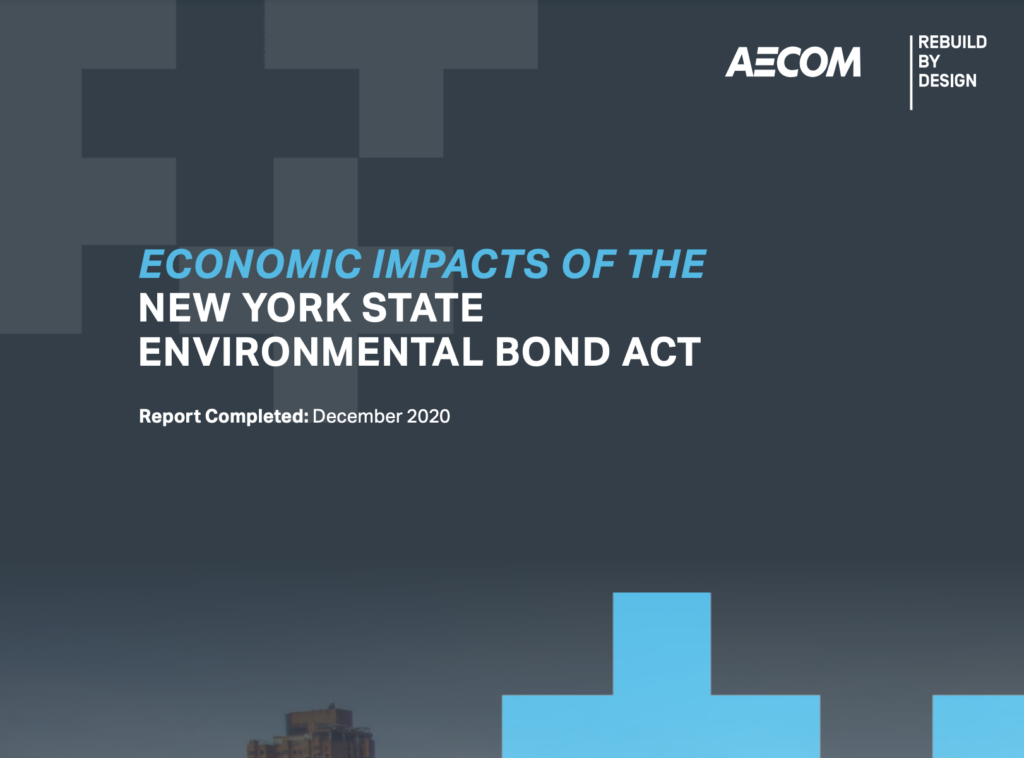The New York State Environmental Bond Act, the largest environmental bond act in State history, would dedicate $3 billion to help restart the economy while protecting clean water, improving public health, and expanding access to nature. The Bond will address pressing infrastructure and environmental needs while providing much-needed stimulus in the wake of the economic devastation caused by the Covid-19 pandemic.
Economic development depends upon infrastructure investments that meet the needs of the present and the future. In the past ten years, every county in New York State suffered severe storms and flooding that caused economic and other hardships for its residents and businesses. A comprehensive approach to help communities prepare their infrastructure and natural systems before suffering additional damage is critical to supporting New York’s economy and enhancing quality of life. Smart investments can convert a challenge into an opportunity for New York workers and businesses to lead the green economy.
AECOM, working in collaboration with Rebuild by Design, estimated the short-term economic impacts of the New York State Environmental Bond Act and evaluated the longterm benefits of the associated investments. The Bond Act can address pressing infrastructure and environmental needs while providing much-needed stimulus in the wake of the economic devastation caused by the Covid-19 pandemic. The Bond Act’s enabling legislation allocates spending to four key categories of investment: water quality improvement; climate change mitigation; open space land conservation; and flood risk reduction. Accounting for leveraged funding, once approved by voters, the Bond Act is estimated to support $6.7 billion in project spending and 65,000 jobs (Table 1). Importantly, the legislation requires that the State makes every effort practicable to ensure that 35% of bond funds be targeted to benefit environmental justice communities. In addition, given New York State’s goal of engaging Minority- and Women-Owned Business Enterprises (MWBEs) in 30% of all state contracts, it is assumed that the New York State Environmental Bond Act will create more opportunities for MWBEs.
Overall, the long-term benefits to be gained by these investments are likely to outweigh the costs of investment. In order to understand the potential long-term benefits of the Environmental Bond Act, AECOM researched benefit-cost analyses for past or planned projects that are comparable to the various types of investments in New York State that would be funded by the Bond Act. From improving resilience and avoiding future costs from severe storms, to creating social and public health benefits for New York residents, applicable research has found that projects associated with the four key categories of spending are shown to be fiscally smart and effective investments.
As governments face budget shortfalls, record unemployment and mounting social, environmental and public health issues, the Environmental Bond Act gives New York an opportunity to address the current economic crisis and mitigate the future challenges posed by climate change, while providing a boost to the State’s economy, creating jobs, protecting the State’s drinking water and other essential natural resources, and improving the lives of New York residents.
The analysis estimates that the New York State Environmental Bond Act has the potential to:
- Support 65,000 jobs in New York
- Result in an estimated $6.7 billion in project spending, broken into the following categories:
- An estimated $3.25 billion to protect and restore natural areas to reduce flooding, supporting 30,600 jobs in New York
- An estimated $1.6 billion for clean water projects, supporting 18,000 jobs in New York
- An estimated $1 billion for projects that would mitigate climate change, supporting 11,500 jobs in New York
- An estimated $775 million for projects that protect and restore open space, supporting 4,600 jobs in New York

